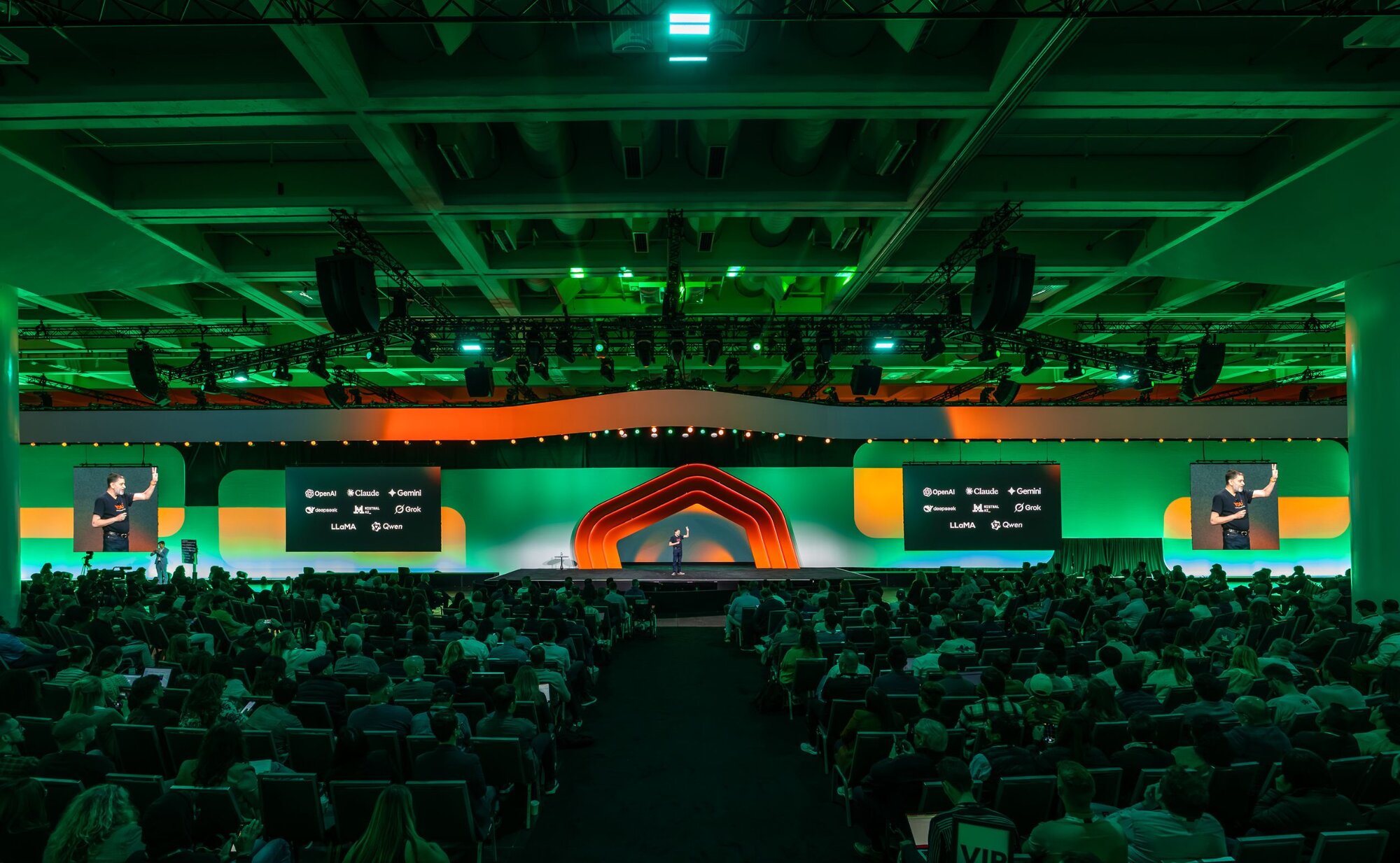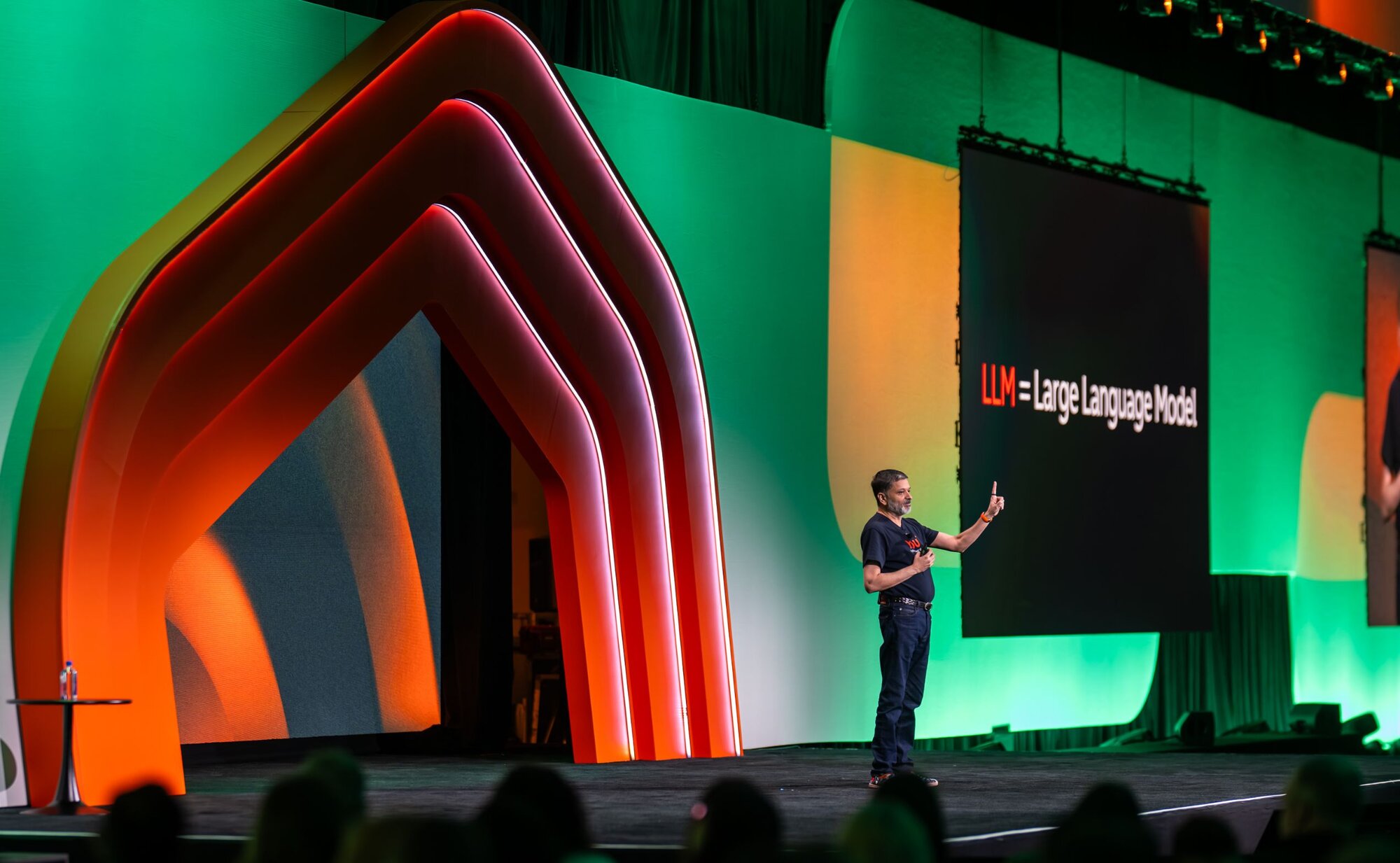Inbound
December 22, 2025How to Use AI to Personalize Emails at Scale
Session Recap
AI
INBOUND 2026 GA and VIP tickets are back on sale—lock in your spot now

Shah opened with a question we’ve all probably asked ourselves: “How do you compete with AI?”
He pointed out that most people interpret this in one of two ways: either against AI or using AI. He challenged the audience to adopt the latter mindset. AI, he argued, is not a zero-sum competitor, but a partner.
“AI isn’t here to replace us. It’s here to replace the parts of our work that don’t bring us joy.” — Dharmesh Shah
The real opportunity is in collaborating with AI to do more meaningful work. He centered the conversation around possibility, progress, and taking some of the drudgery out of our day-to-day lives.
“The goal isn’t to battle the machine. The goal is to build with the machine.”
One of Shah’s superpowers is explaining complex concepts in ways that actually make sense. During his session, he broke down how generative AI works with relatable metaphors and just enough technical detail to make it stick.
He started with foundational AI knowledge, comparing it to his own experience learning keyboard and years of fumbling around until he finally learned music theory. His key insight? "A little bit of foundational knowledge went so far." The same principle applies to AI: a little understanding goes a very long way in getting better results.
He explained how large language models (LLMs) are trained, what tokens are (about three-quarters of a word), and why the “context window” matters so much. Think of the context window as everything the AI can “see” at once—modern models can handle as many as a million tokens (or, as he joked, most of the Cheesecake Factory menu).

A key shift Shah introduced was moving beyond prompt engineering toward context engineering. It’s about how you phrase the question and what you feed the model.
He outlined the PART framework—Prompt, Archive, Resources, Tools—which helps define what information goes into the AI’s context window. And he gave attendees a simple rule of thumb to guide their AI usage:
“Every time you sit down at a computer to do something, try it first with AI and see if it can help.” — Dharmesh Shah
That one-liner became a mini-mantra by the end of the talk. Try it first with AI. Don’t overthink it. Just start. Shah encouraged everyone to adopt a mindset of, “This doesn’t work. Yet.” Because what fails today might work brilliantly three months from now as the tech evolves.
Shah’s pro tip: set calendar reminders to revisit and retry failed AI experiments every few months. What once felt impossible could become a no-brainer with just one model update down the road.
It’s one thing to be an AI power user. But Shah thinks that the future belongs to AI-powered teams. Research from Harvard Business School shows that while individuals using AI outperform those who don’t, teams using AI create more innovative solutions than either.
That’s where his TEAM strategy comes in:
“AI should not be a performance art… It should be performance driven.”
Leaders need to build a culture where everyone gets to experiment, iterate, and learn together. The future belongs to hybrid teams where everyone’s empowered to explore, test, and scale what works.

With all this talk of automation and agents, you might be wondering: What’s left for us humans?
A lot, actually.
“As smart as AI is, humans win on EQ.” — Dharmesh Shah
AI hasn’t lived life. It’s never tried to fold a fitted sheet, resolve a family feud, or negotiate with a sleep-deprived toddler. It doesn’t understand nuance, empathy, or culture in the way that we do.
That emotional intelligence along with judgment, humor, and lived experience is irreplaceable and those are our greatest advantages. So instead of asking AI to think for you, Shah suggests using it to test your ideas and challenge your assumptions. But the human at the helm? That’s still you.
“Use AI to test your thinking, use it to clarify your thinking, and elevate your thinking, but don’t use it to replace your thinking.”
The session wrapped with a big idea that’s both inspiring and oddly comforting:
“The better AI gets, the more it allows us to be human. And being human is not a bug. It’s our best feature.” — Dharmesh Shah
Instead of fearing what AI will take from us, Shah urged us to imagine what it can give us back—time, energy, focus. The stuff we actually want to spend our days on.
AI should replace the repetitive parts of our jobs so we can double down on the creative, strategic, and joyful parts. And the companies that figure this out soonest will be the ones leading the charge over the next decade.
So where do you go from here? Shah left us with this call to action:
“The future does not belong to artificial intelligence. It belongs to you, with augmented intelligence.”
You don’t have to wait for the perfect tool, the perfect use case, or the perfect prompt. You just have to start. Experiment. Build. Learn as you go.
It’s as much about tech adoption as it is about culture, mindset, and leadership. Whether you’re just starting out or already building custom agents, your journey with AI is really about amplifying your team’s creativity, emotional intelligence, and impact.
You don’t need to know everything. You just need to be willing to try, iterate, and build.
Watch Dharmesh Shah’s full session:

Want to stay ahead? Subscribe to our email list for exclusive marketing, sales, and AI insights along with first dibs on all things INBOUND: